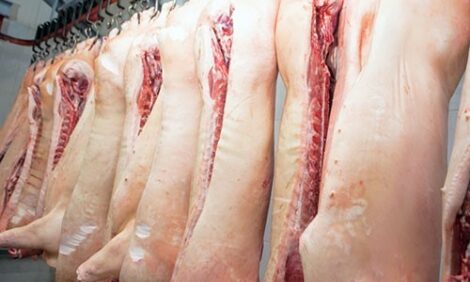



Pork CRC ponders pig feed efficiency flaws
Dr Roger Campbell, Pork CRC, reports on Australia's successes and shortcomings of the last year and discusses future projects with APRIL.In his latest report to stakeholders, CRC for High Integrity Australian Pork CEO, Dr Roger Campbell, said Australian pork producers were making good progress in reproduction and they matched their overseas competitors for herd feed efficiency, but they came a long way last in volume, or kilogram carcass weight sold per sow, per year.
Dr Campbell explained how Australia’s shortcomings in volume have impacted costs:
The latter is reflected in Australia’s much higher costs, other than feed, than our global competitors and this must be addressed through better sow productivity and potentially heavier carcass weights.
He acknowledged that the issue of heavier weights was market driven and largely up to individual businesses working with their customers.
While Pork CRC research had positively impacted born alive and number weaned, he expected further enhancements through Australasian Pork Research Institute Limited (APRIL), which had now called for research proposals to markedly enhance the competitiveness and sustainability of the Australasian pork industry.
The APRIL call closes February 16, with successful projects expected to begin July 1.
Dr Campbell said Australian pork producers were competitive for feed efficiency, but it was a key performance indicator that unfortunately had remained static for some time and was well below the capability of available genetics.
For example, the average feed: gain between weaning and sale for producers in Pork CRC’s benchmarking project was 2.4 The desired target was 2.0 from wean to sale.
In a commercial study on grind size (Pork CRC Project 4B-121), nutritionist Tony Edwards reported an average feed gain ratio of 2.38 across three studies, using female pigs between 38 and 97 kg.
In earlier work on lysine requirements of modern genotypes at WA’s Medina Research Station, Dr Bruce Mullan and his DAFWA colleagues reported feed: gain values for 50 to 100 kg group housed female and male pigs of 2.55 and 2.25 respectively.
Dr Campbell concluded:
Recognising we are missing out on a lot of the pig’s potential, we need to determine the major factors robbing us of feed efficiency in commercial herds. That could be what’s fed and how it’s fed, or pigs per unit of air space.
As reported by Pork CRC









